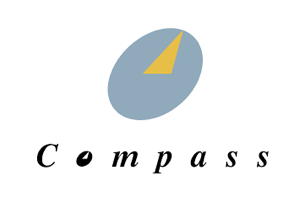
Compass Airlines - Aircraft Fleet:
Background Information.
Compass Airlines was Australia's first low cost airline. It was established following deregulation of the Australian airline industry in 1990. Previously both Ansett Airlines and the government-owned Australian Airlines (formally Trans-Australia Airlines) had operated under the Federal Government’s ‘Two Airline Policy’ which was in fact a legal barrier to new entrants to the Australian aviation market. It restricted intercapital services to the two major domestic carriers. This anti-competitive arrangement ensured that both airlines carried approximately the same number of passengers, charged the same fares and had similar fleet sizes and equipment.
Compass Airlines, often referred to as ‘Compass Mk I’ was established by Bryan Grey, who had previously run the New South Wales regional airline East-West Airlines.
East-West had earlier attempted to break the Ansett and Australian Airlines duopoly by offering cheap fares but in the regulated environment of the time it was not allowed to operate directly between the major cities. It was forced to detour via a regional town in order to circumvent the existing regulations. East-West was ultimately acquired by Ansett.
At its peak Compass Mark I operated four leased Airbus A300 aircraft and a single Airbus A310. Three additional further Airbus A300 aircraft were on order in 1990 but were not taken up as a result of the failure secure the necessary finance. Alternatively two Airbus A300s were leased from the British charter carrier Monarch Airlines.
Compass Mk I collapsed a little more than a year after its first flight. The reasons put forward to explain this collapse was its under capitalization from the beginning, sustained fare discounting by its competitors, failing to make use of its potential to carry freight but above all the incorrect choice of aircraft to launch the new airline.
The Federal Government made it extremely difficult for the new airline to succeed, as evidenced by the lack of suitable facilities provided to Compass. In the major cities the airline was forced to accept what were the least accessible aircraft parking bays inside the terminal of one of their competitors. This impediment to successful trade was noted by the government's own Australian Competition and Consumer Commission in the study it conducted following the airline’s failure. Compass Airlines' initial operations were also significantly disrupted by what appeared to be a computer attack on their reservations system.
The official findings of the Australian Tax Office concluded that the federal government set in place legal proceedings that inevitably led to the repossession of the leased aircraft and the effective grounding of the airline, with the subsequent direct and indirect loss of thousands of jobs.
The government and Compass had been in dispute for many months over the amount of money to be paid for the provision of services provided by the governmental authority the Civil Aviation Safety Authority. Although this dispute had been ongoing, the Government chose to act just before the peak 1991 Christmas travelling period. At 21:00 on 20 December 1991, Compass Airlines was grounded.
The underlying issues remained unresolved until a final High Court of Australia hearing. It was argued that had the airline been allowed to continue trading over the Christmas period, the peak travel season in Australia, it would have had more of a chance meeting its disputed financial obligations than being shut down at that point in time.